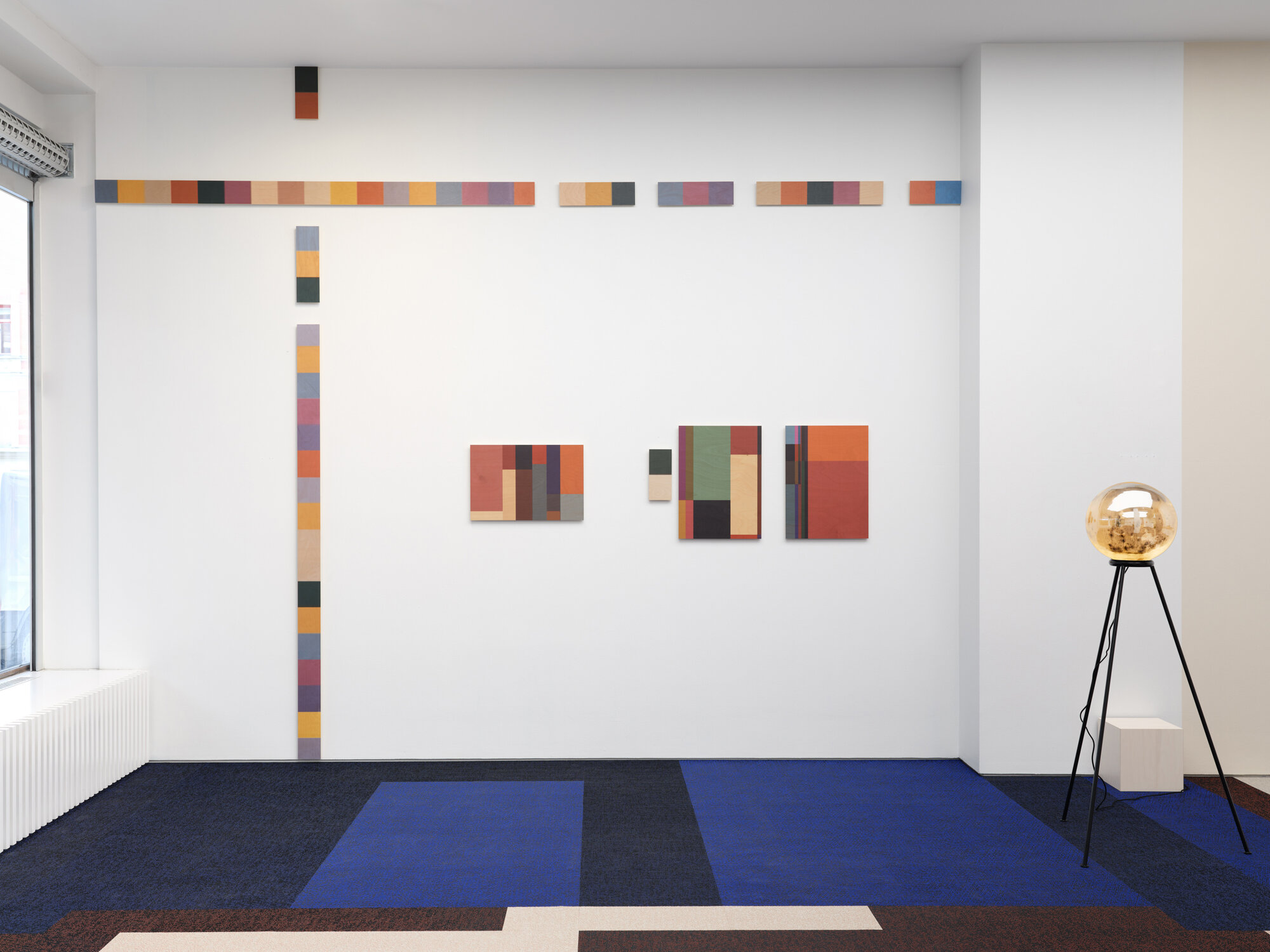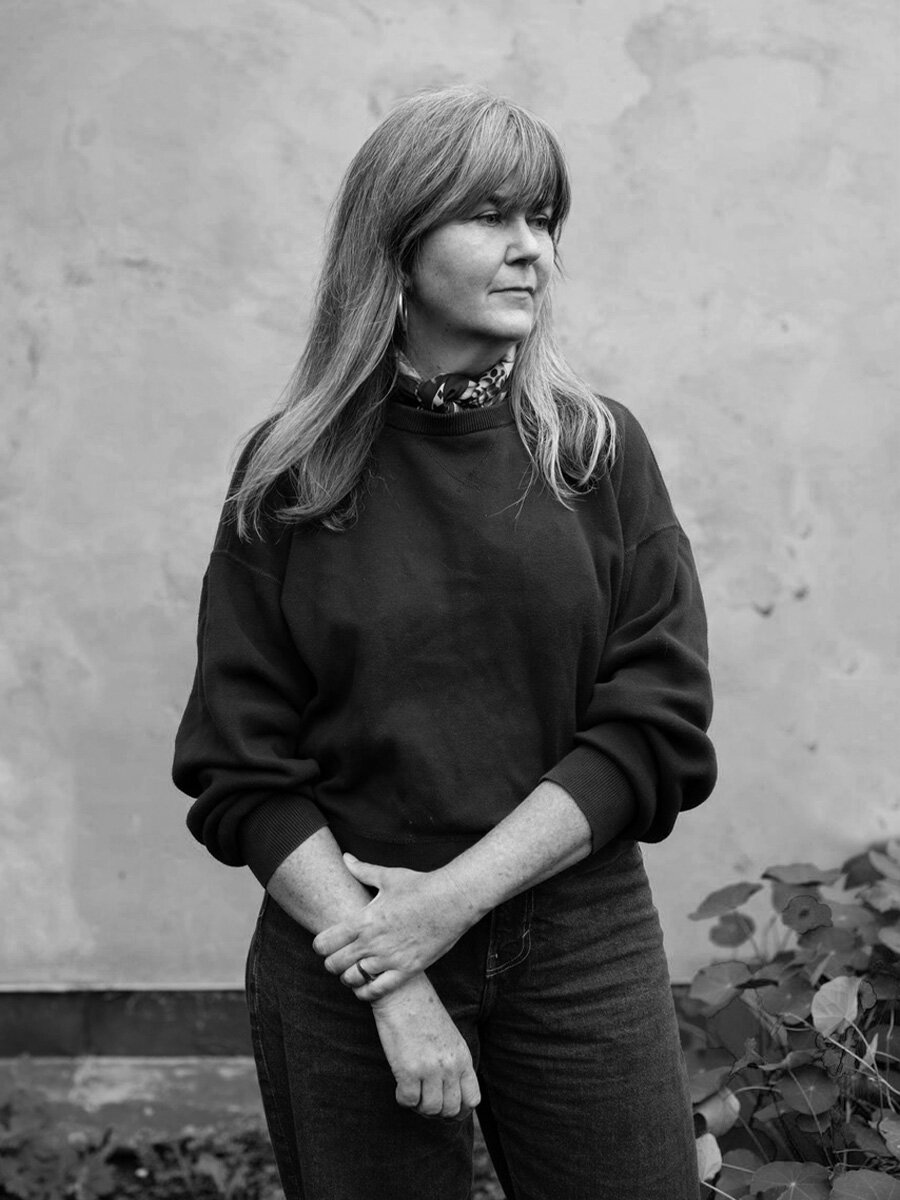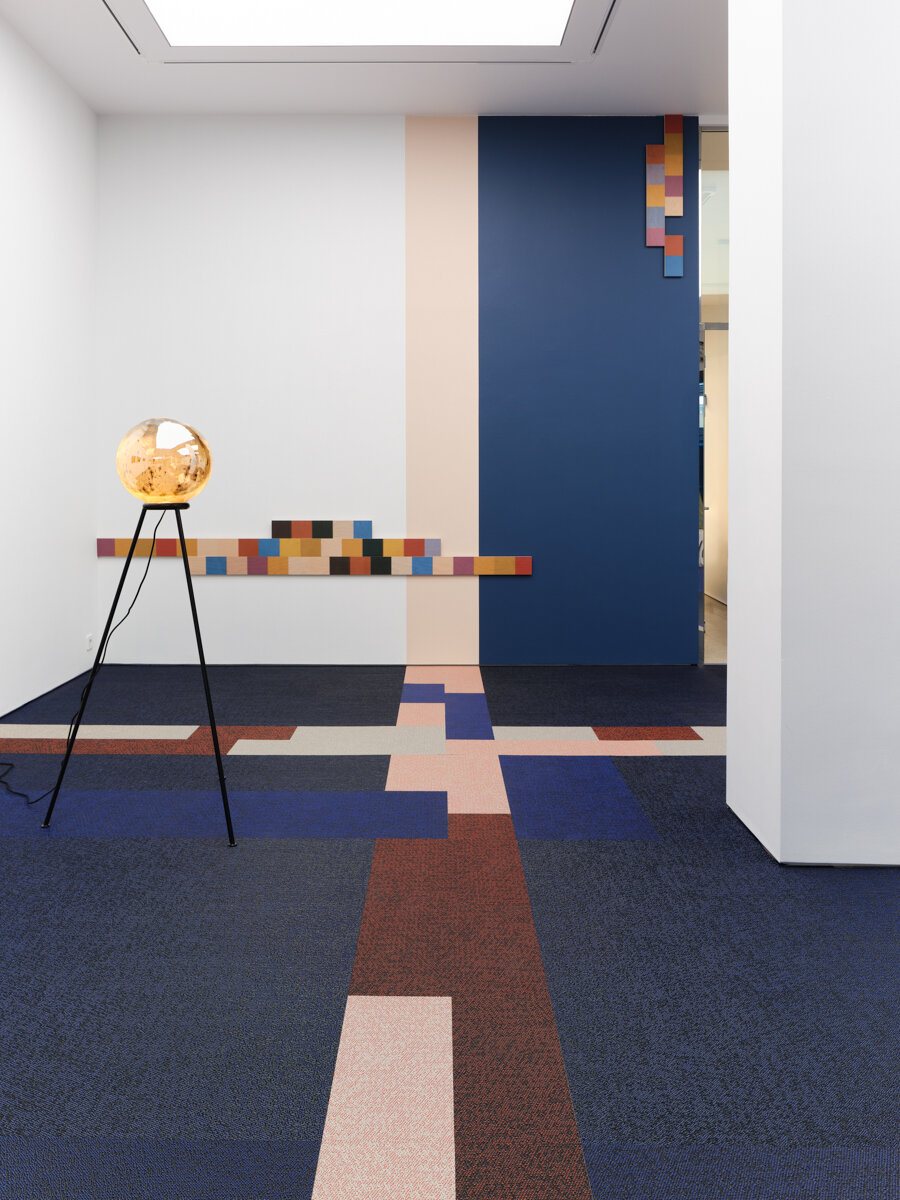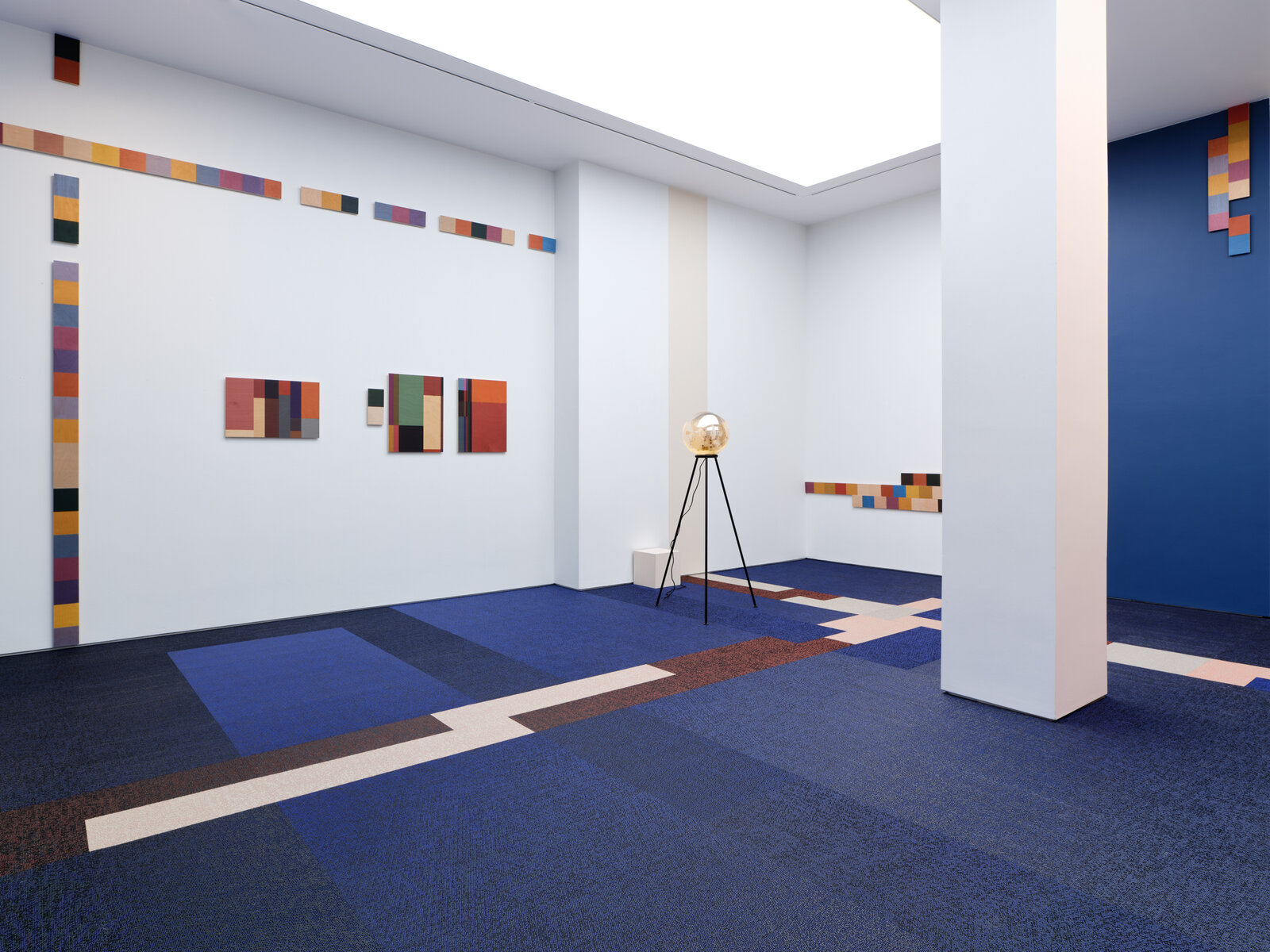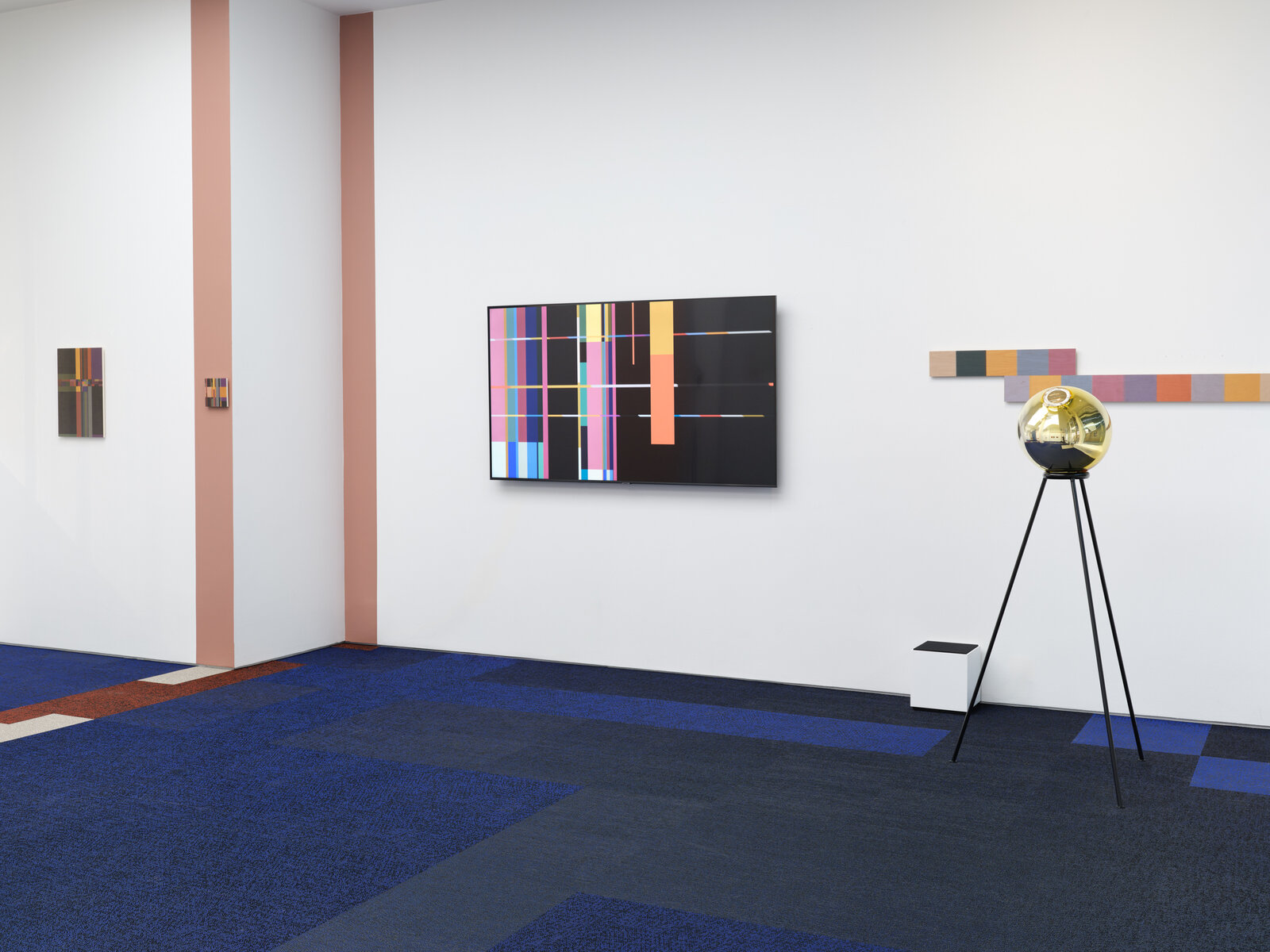Loops and Lamentations expand your video work The Elements into a full-room installation. What was your vision for creating such an immersive environment?
I see my video work as extended musical pieces, and I wanted to further expand the idea of the film The Elements into the gallery space. As an artist, I often work with bigger room installations, settings, and set-like environments to invite the viewers into my audio-visual world.
The work reinterprets Karin Larsson’s tapestry The Four Elements almost like a remix. What drew you to deconstruct and reassemble this piece of Swedish heritage?
Growing up in Falun, near Lilla Hyttnäs/Carl Larsson-gården, I was from an early age fascinated by a section from Carl Larsson’s painting Azalea (1906), of which a reproduction hung in my childhood home. In the painting, Karin Larsson’s tapestry The Four Elements can be seen, still on the loom, and this part of the work created a seemingly abstract section in the otherwise figurative painting. For me, it came to constitute an abstract loophole in a figurative world. As an artist, this experience stayed with me, and this exhibition is a way for me to explore the border between abstraction and figuration in an image.
